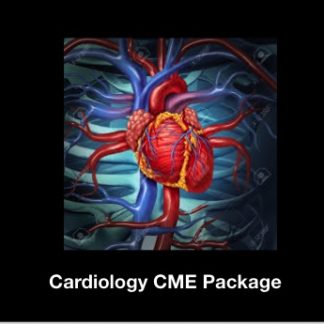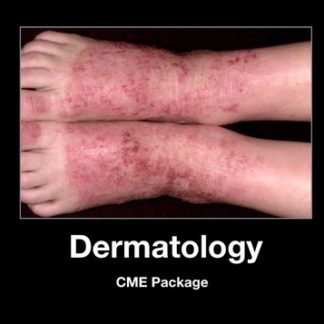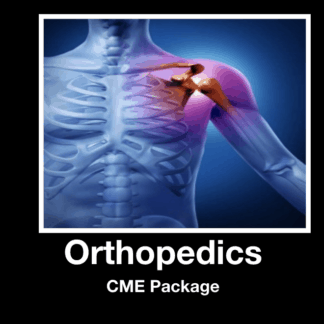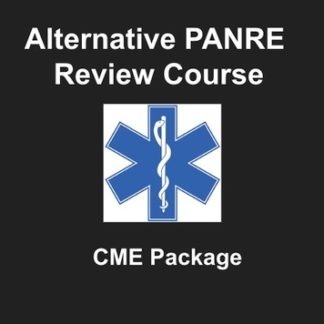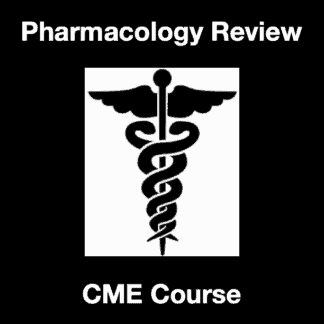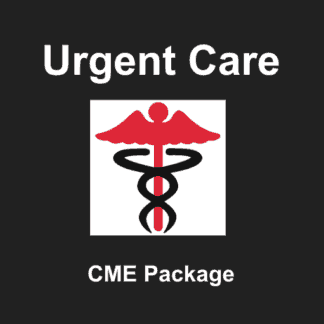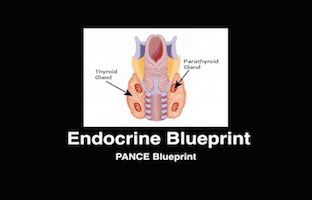Description
Reproductive Blueprint PANCE/PANRE Review Course and Video
This section is review of the Reproductive Section for the NCCPA Blueprint topic list for the PANCE and PANRE. This section contains the Lecture Video (1:20:26), as well as 200 Reproductive Multiple Choice PANCE style questions, answers and detailed explanations. Reproductive Lecture Slides are also included. This section will be continuously updated and you will be given access for 30 months.
This section is designed for physician assistants preparing to take the PANCE/PANRE. Medical students preparing for the USMLE and COMLEX may find this section helpful.
This is in a mobile friendly form.
We do offer Category 2 CME with Amazon and Apple Gift Cards. Click here if interested in CME with Amazon and Apple Gift Card Add on
Reproductive Blueprint Preview Questions, Answers, and Explanations:
Reproductive Blueprint
Questions, Answers, and Explanations
Question 1
1. Your patient is a 24 year old female 31 weeks pregnant with preeclampsia in the ER with headache, dizziness and vomiting. Her blood pressure is 235/130 and heart rate is 88. Which of the following is not appropriate for management of her elevated blood pressure emergently?
A. Hydralazine
B. Labetalol
C. Methyldopa
D. Nitroprusside
Answer 1
1. Choice D is the correct answer. Nitroprusside is not ideal for preeclampsia patients. It is actually pregnancy category C, but hydralazine, labetalol, and methyldopa are more safe. In addition, there is a cyanide toxicity risk even at low infusion rates.
Question 2
2. Which of the following patients would be less like to develop ectopic pregnancy?
A. Patient with pelvic inflammatory disease
B. Patient with ovarian cysts
C. Patients that are on Clomid
D. Patient with history of previous ectopic pregnancy
Answer 2
2. Choice B is the correct answer. PID, infertility treatments, and history of ectopic pregnancy are well defined risk factors for ectopic pregnancy. Ovarian cysts are not a risk factor for ectopic pregnancy.
Question 3
3. Which of the following is true regarding the signs and symptoms of ovarian torsion?
A. The pain may come and go
B. Usually a sudden onset of unilateral pelvic pain
C. Untreated torsion may lead to peritonitis
D. All of the above
Answer 3
3. Choice D is the correct answer. The pain may be intermittent and present as unilateral pelvic pain. Untreated torsion can lead to peritonitis. In addition, up to two thirds of patients will have associated nausea and vomiting.
Question 4
4. Which of the following is not true regarding HSV genital infections?
A. The first outbreak is usually worse than reoccurrence
B. Systemic symptoms may be present
C. Treatment with oral antiviral agents is not helpful
D. It is the most common cause of bladder outlet obstruction in young females
Answer 4
4. Choice C is the correct answer. Oral antiviral agents are helpful, especially when instituted in the first 48 hours of onset. Systemic symptoms can be present, but a small percentage of the time. The initial outbreak usually is the worst. The inflammation and lesions associated with HSV genital infections, are the most common cause of bladder outlet obstruction in young females.
Question 5
5. Your patient is a 24 year old female who is approximately 34 weeks pregnant with left flank pain. Her urinalysis shows gross blood and no white cells. You are interested in confirming the presence of kidney stones because she had to have surgical intervention with them in the past with previous pregnancies. Which radiographic modality is the best test to order?
A. KUB
B. CT abdomen and pelvis without contrast
C. Renal Ultrasound
D. MRI of abdomen and pelvis without contrast
Answer 5
5. Choice C is the correct answer. Renal ultrasound is the modality of choice. It has the lowest exposure to radiation, and highest yield. It is important to note you do not actually see the kidney stone, but you will see the associated hydronephrosis and ureter dilation. CT scan of abdomen and pelvis without contrast in the non pregnant patient is the ideal test, but is too much radiation exposure when other tests are available. KUB will have some minimal radiation, but will be low yield. MRI of the Abdomen and Pelvis is not an ideal modality because of cost and will have virtually radiation exposure.
Question 6
6. Preeclampsia includes all of the following except:
A. Proteinuria
B. Hypertension
C. Seizures
D. Edema
Answer 6
6. Choice C is the correct answer. Preeclampsia includes proteinuria, hypertension, and edema. When seizures are present it is considered eclampsia.
Question 7
7. Your patient is a 34 year old female that is 32 weeks pregnant involved in an MVC and she has a bruise in her abdomen. Her imaging of her baby as well as her are negative. Fetal heart rate and ultrasound are reassuring. Which of the following is the most accurate regarding blunt trauma in pregnancy?
A Maternal blood pressure and heart rate are reliable indicators of fetal and maternal well being.
B. If maternal shock is present, fetal compromise is minimal with mortality rates of 10%
C. All pregnant patients over 20 weeks should be place in the left lateral decubitus position
D. All pregnant patients that are Rh negative involved in blunt trauma should be treated with Rhogam
Answer 7
7. Choice D is the correct answer. When pregnant patients are placed in the left lateral decubitus position, it takes pressure off the vena cava and allows for increased blood return to the right side of the heart. This should really only be done if there is some fetal compromise or material shock. The fetal heart rates should be assessed as well as well as the mother’s vital signs. All pregnant patients that are Rh negative should receive rhogam with blunt force trauma.
Question 8
8. Which of the following is not true regarding hypertension in pregnancy?
A. Hypertension is present in about 7 percent of pregnancies
B. Toxemia does not occur once delivery of the placenta is complete
C. Eclampsia describes the onset of increased blood pressure, edema, proteinuria, and the onset of seizures
D. HELLP syndrome is a severe form of pregnancy induced hypertension that develops in 5-10 percent of females who have preeclampsia symptoms
Answer 8
8. Choice B is the correct answer. Toxemia can present up to 6 weeks postpartum. The vast majority of cases though improve with delivery of the placenta.
Question 9
9. Your patient is a 25 year old female that presents with pelvic pain, yellow vaginal discharge, and cervical motion tenderness. Which of the following is the best treatment for her condition?
A. Azithromycin and Ofloxacin
B. Ceftriaxone and Doxycycline
C. Metronidazole and azithromycin
D. Azithromycin, Ciprofloxacin, and Metronidazole
Answer 9
9. Choice B is the correct answer. Ceftriaxone covers gonorrhea and doxycycline covers chlamydia for PID. Azithromycin also covers chlamydia. Metronidazole covers Trichomonas that cause vaginitis. Ofloxacin and ciprofloxacin have a large amount of resistance and generally are avoided in treatment of PID.
Question 10
10. The chancre of syphilis:
A. Is always painful
B. Will heal spontaneously without treatment
C. Is always a single lesion
D. Will always occur on the penis or vulva
Answer 10
10. Choice B is the correct answer. These lesions will resolve without treatment but will lead to secondary syphilis which presents as painless papules on the palms of hands. Syphilis chancre are painless.
